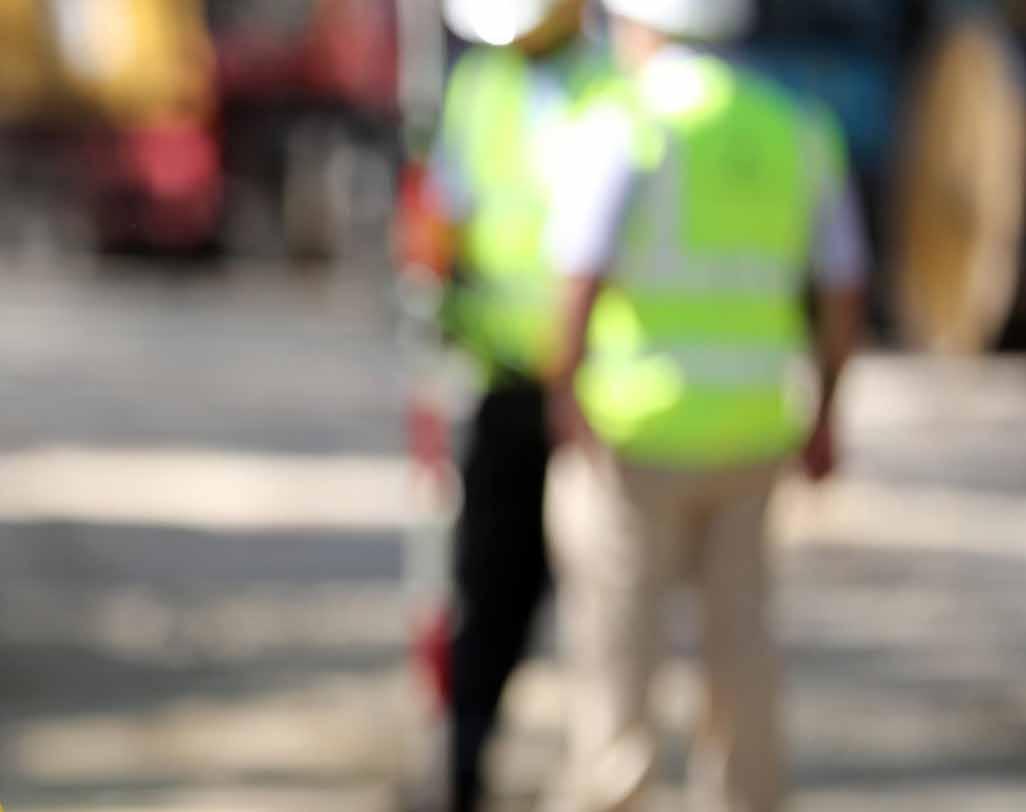
44 minute read
Shanta Gold
REVISITING TANZANIA’S GOLD STAR
Shanta Gold
Advertisement
RESEARCH BY Eurides Lopes
Eric Zurrin CEO
The recently re-elected president of Tanzania, John Magufuli stated in November 2020 that his government predicts economic growth of 8% for the country over the next five years. This isn’t unreasonable given that the country’s GDP has grown by a CAGR of around 7% over the five years of Mr. Magufuli’s first mandate. Given that over half of the country’s export income comes from gold, the success of Shanta Gold is inextricably tied with the fortunes of Tanzania. When Business Excellence last visited Shanta Gold, in 2018, it was celebrating results for 2017 which had just been released, showing the company’s best year on record both in terms of gold production and financial results. Both 2018 and 2019 showed improvement on the figures from 2017, and the signs are that 2020 could be owned by Barrick Gold through a subsidiary Acacia Mining. As soon as any mention of the acquisition is made, Mr. Zurrin’s eyes light up with enthusiasm. It’s clear from his reaction that the analysts at Liberium Capital aren’t the only ones passionate about the project’s prospects.
He says: “The oversubscription for the share issue means that we were able to buy out Barrick Gold, which was part of the longterm strategy for Shanta. We’ve also been able to institutionalize the share register. And what we’re planning on doing with these funds is to invest in the West Kenya project. We were going to do that anyway, but the success of this capital raise lets us do this much, much faster.”
He continues: “The way I think of thinking
even stronger again, despite the backdrop of the ongoing global Covid-19 pandemic.
In late 2020, the company is coming straight from a highly over-subscribed share issue where it managed to raise just over £32 million for its latest project in west Kenya, and a bullish update from Liberium Capital which predicted that the company’s share price could double by the end of 2021. What better time to speak with the company’s CEO, Eric Zurrin about the company’s recent strategic moves and the changes he and his team have implemented to inspire such investor confidence.
Growth Mining
The big story at Shanta since our last feature on the company has undoubtedly been its acquisition of the West Kenya mine, previously of this is ‘okay, we’ve acquired this asset at less than $100 per ounce, but let’s show everyone that its true value is closer to $200 or $300 per ounce.’ We believe that it’s worth a lot more than what we paid and the only way to show people this is to invest in it. West Kenya is the highest grade of 1 million ounce-plus deposit in Africa. It’s 1.2 million ounces and 1.6 grammes per tonne. That is an eye-catching grade and it’s been heavily de-risked by Acacia (the previous owners of the mine) who invested $64 million in it. And we believe that it has just an incredible amount of potential.” Mr. Zurrin justifies this enthusiasm further by pointing to the example of Barrick Gold - the world’s largest gold producer by market capitalization - in the region: “Look at Barrick Gold in Tanzania. Recently, Barrick

announced 10 new exploration licences that they’re investing in. This is in the same belt. Don’t forget that, it’s on the Kenyan side of the border but that these are highly attractive areas for mineral endowment and that’s what you want to start with - it always comes down to asset quality.”
In the midst of all this, it can be easy to forget that Shanta Gold is now heading up three projects, with a third at Singida in Tanzania. Of this, Mr. Zurrin says: “At Singida, we’re also looking to begin construction, so that is very meaningful to our story, because in 2022, it should mean that we’ll be producing 220,000 ounces. All this is going on at the same time as Luika, our main asset. I think we’ve now drilled 25,000 metres. And there’s a lot to look forward to from that asset as well.”
Compelling Results
Of course, acquisitions are just vanity metrics unless they generate value for the company. Given his long history in investment banking, Mr. Zurrin knows this better than most, and


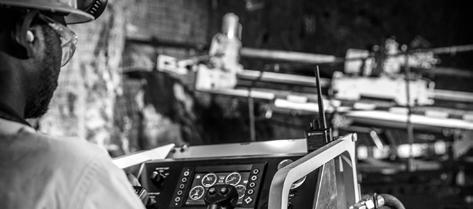
PEOPLE you can WORK WITH
Bamboo Rock Drilling Group is a Client centric, hands on operating organization focused on operations throughout Africa with the primary goal of delivering World Class services in a Safe, Controlled and Cost Efficient environment.
info@bamboorockdrilling.com www.bamboorockdrilling.com
he’s also keen to emphasize the financial performance of the company he heads up: “We consistently generate profits. Not many companies in this industry can say that. They can only dream about it. Over the last 8 years, we’ve generated around a billion dollars of gold sales.”
This translates into some very healthy results: Free cash flow, which was $14.1 million in 2019, is set to reach $38.8 million in 2020. And EBITDA, which was $47.7 million last year, is expected to hit $60.8 million for financial year 2020. Recall, this is at a time when most companies’ financial results have taken a hit, owing to the Coronavirus pandemic. Mr. Zurrin also adds: “don’t forget too that our reserves have 653,000 ounces of gold - the highest that Shanta has ever recorded in its history.”
Sustainability
Of sustainability, Mr. Zurrin says: “There are three ways that we think about mining in Tanzania and Kenya. And it’s really important that we take a long-term view. At the end of
the day, we are a business that just happens to be in mining, so our shareholders have to benefit. But the host country and communities also have to benefit. We really feel it’s that tripartite that drives our approach, which should be sustainable for all three of those stakeholders.”
“So, this is important as we’re not thinking about short-term solutions at any of our mines. This means, for example, that we support employment. Farming has also increased exponentially over the past three years thanks to Shanta Gold initiatives, which have sought to upskill farmers in modern farming methods. Around 40% of our employment also comes from the villages surrounding the mines.”
“Education is also a big one for us. I’m a father of three young children and I see the direct benefits of education, so we’ve set up a program where UK teachers come down

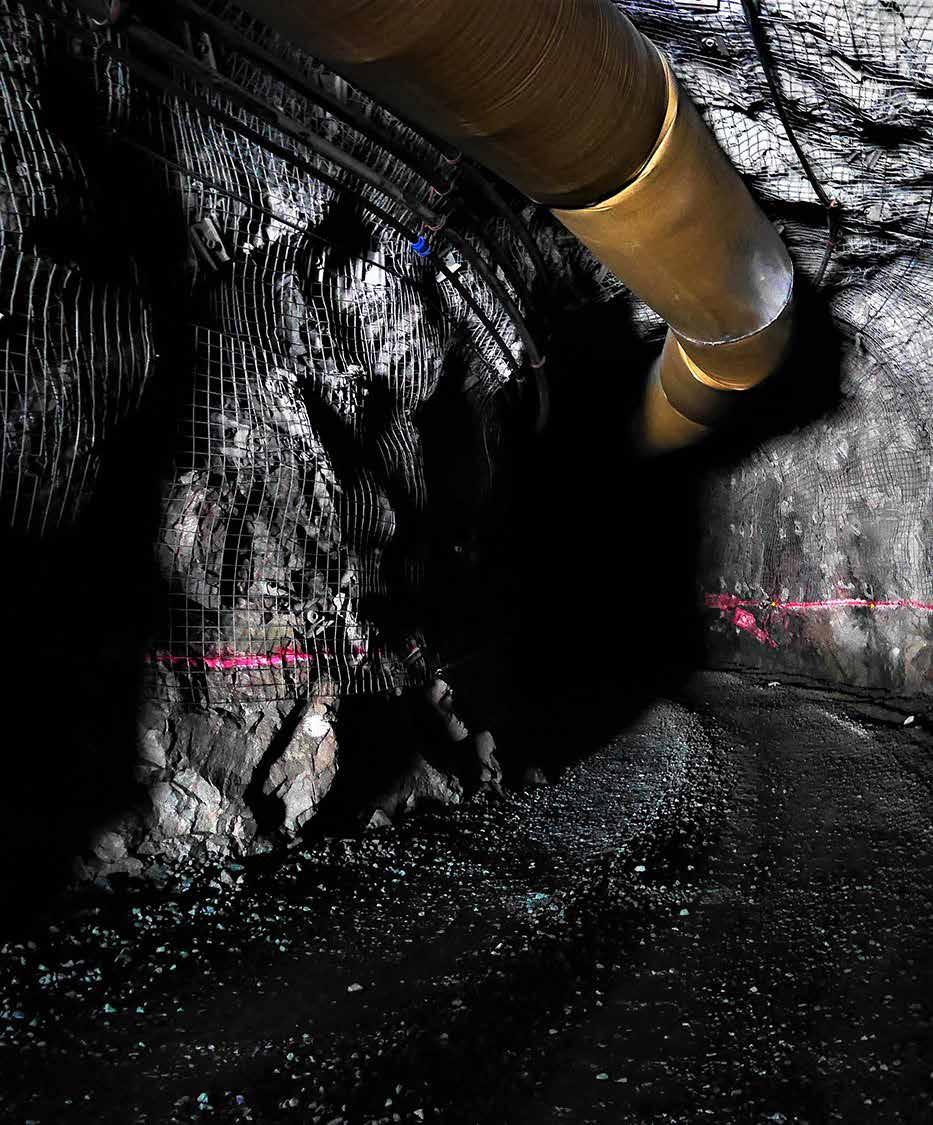
to Tanzania to teach the local kids. This has already passed 1,500 days of teaching and it’s still growing. We’re also strongly involved in health, bringing international medical experts to some of the remotest parts of Tanzania to provide medical support.”
A Precious Metal, A Bright Future
If the reader hadn’t already guessed it, Mr. Zurrin could hardly be any more enthusiastic about his company’s prospects, noting: “West Kenya is potentially a game changer for Shanta. Look at the grade, look at the resources and the fact that we paid twenty cents on the dollar to take it over.” And although the enthusiasm is infectious, it’s clear that it’s not hubris. The raw numbers are there to back everything up, from the revenue to the sustainability figures.
And what’s good news for Shanta Gold is good news for Tanzania, which will partly rely on gold production to ensure it achieves that 8% growth it’s planning. For Zurrin, this is no bad thing: “We’re supportive of the president’s 2025 growth plan. We’ve been in Tanzania for a third of the time it’s been an independent country. We have a great relationship with the government and the communities and we’re really happy operating here.”
SHANTA GOLD +255 22 2925148-50 info@shantagold.com @shanta_gold www.shantagold.com
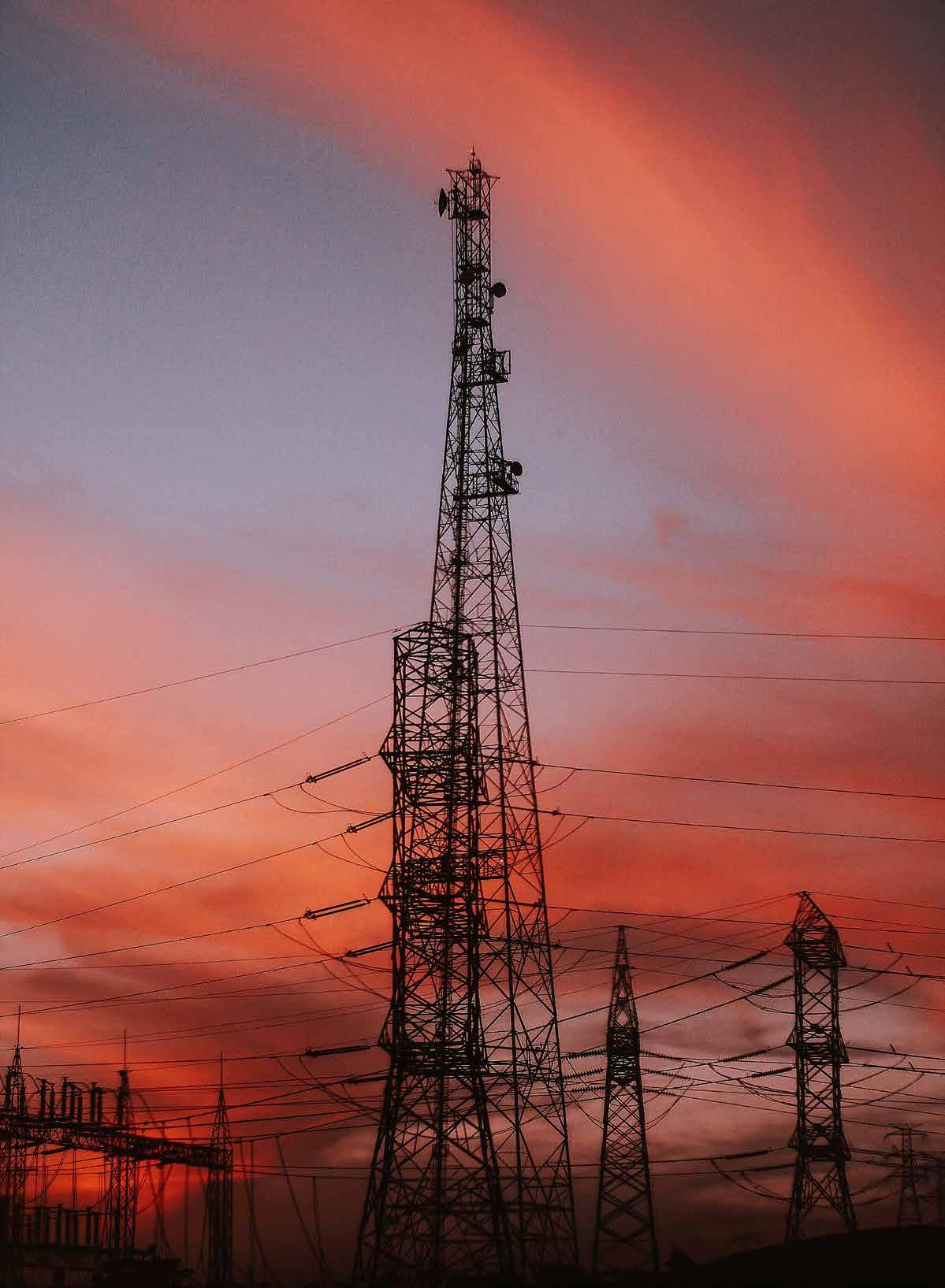
A NEW ERA FOR MOZAMBIQUE
EDM
RESEARCH BY Eurides Lopes

When Business Excellence last visited Electricidade de Moçambique (EDM), the focus of the interview was the changes that Mozambique was undergoing. The company had just received financing from the World Bank and the European Investment Bank to the tune of $200 million and plans were being put in place to improve the energy links that existed between Mozambique and neighbouring countries like South Africa.
Five years later and so much has changed. In 2018, the government launched the National Electrification Strategy under the ProEnergia program, with the goal of reaching universal energy access in Mozambique by 2030. Only about 40% of Mozambique’s 30 million strong population have access to the national grid spectrum of electricity products and services in Mozambique.
EDM is the company responsible for generating, transmitting, and distributing electricity to the people and business in Mozambique. Its operation includes an electricity generation capacity of more than 2600MW. Its transmission network consists of more than 5,000 kilometers of high voltage lines, and managed with staff strength of 3500 employees
EDM is responsible also responsible for the export energy to the SADC region and importation of energy when necessary. It is responsible for operating and managing the National Electricity Transmission Network and on behalf of the Government of Mozambique
or off-grid/mini-grid systems. As such, the project aims to bring electricity to around 18 million people.
The National Electrification Strategy is nothing if not ambitious, then. In fact, it could be the single most transformative event since the country achieved its independence from Portugal in 1975 - opening up huge opportunities in Mozambique’s regions that simply couldn’t exist until now. Business Excellence didn’t want to miss the chance to call back on EDM and check on progress on this once in a generation project.
Reintroduction
The corporation EDM was created in 1977 with the mandate that covers the entire
A Nexus of Projects
Given the scale of the electrification project underway in Mozambique - with estimated investments in excess of $1 billion required by 2024, alone - this is more of a nexus of ongoing projects rather than one project in itself. Every one of the country’s provinces is already seeing projects being planned and constructed - nobody is being left behind. Some of the most notable projects are already underway in Cabo Delgado, Massangena, Chigubo and Nampula.
If there are benefits to electrifying well after many other countries, it’s that Mozambique has an opportunity to learn from their experiences of other and implement state of the art technology across its electrical grid.
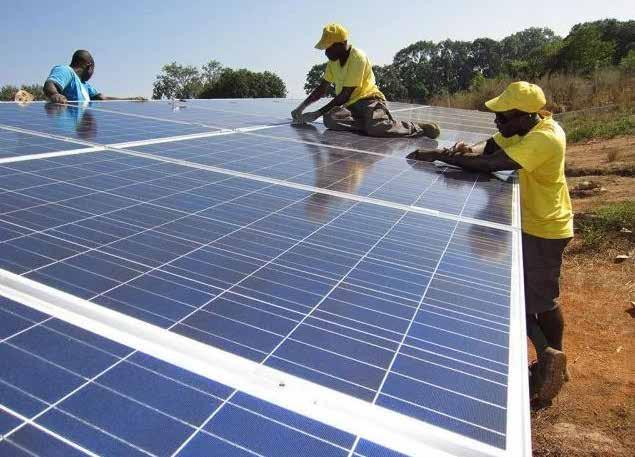
That has led to a significant investment in renewable energy projects such as the Metoro Solar Power Plant in the Cabo Delgado province and the Mocuba Solar Power Plant in the Zambesia province - both 40MW realized through PPP are signs of how Mozambique will be taking lead in the renewable energy as well as becoming an energy hub across the region.
Other exciting projects include the first Combined Cycle Gas Turbine (CCGT) power plant in Southern Africa. This is a 400MW gas-to-power plant with an associated 400kV transmission line. This is the Temane-Maputo power plant and line consisting of about 600km, the transmission interconnections between Mozambique and Malawi; Mozambique and Zambia, and Mozambique and Tanzania. There is also the construction of the Caia–Nacala 400kV transmission line.
There are other less popular equally as important and transformative projects including the interconnection line between Metoro and Palma which will significantly
improve the supply and flow of electricity between two of the most underserved population centres in the north of the country. Such connector lines are a central component of the all-inclusive electrification strategy.
A Change of Culture
In order to reach its ambitious targets, EDM has undergone a change of culture itself. Aside from beginning its first PPP investments, it has also begun sponsoring programs such as Proler (renewable energy auction system) and GET FIT (tariff viability gap funding) to support private companies contributing to their goals. Elsewhere, it works closely with FUNAE (Mozambique’s Energy Fund) to encourage the growth of off-grid electricity in the country.
This change of culture was one of the driving factors behind the organizational changes that EDM recently underwent. A new board of directors was put in place at EDM in July 2020, managing with a more organic structure than before. The new objective of the board has been clearly set, and the organization’s less rigid structure has been put in place to achieve it - full electrification of the country within a decade.
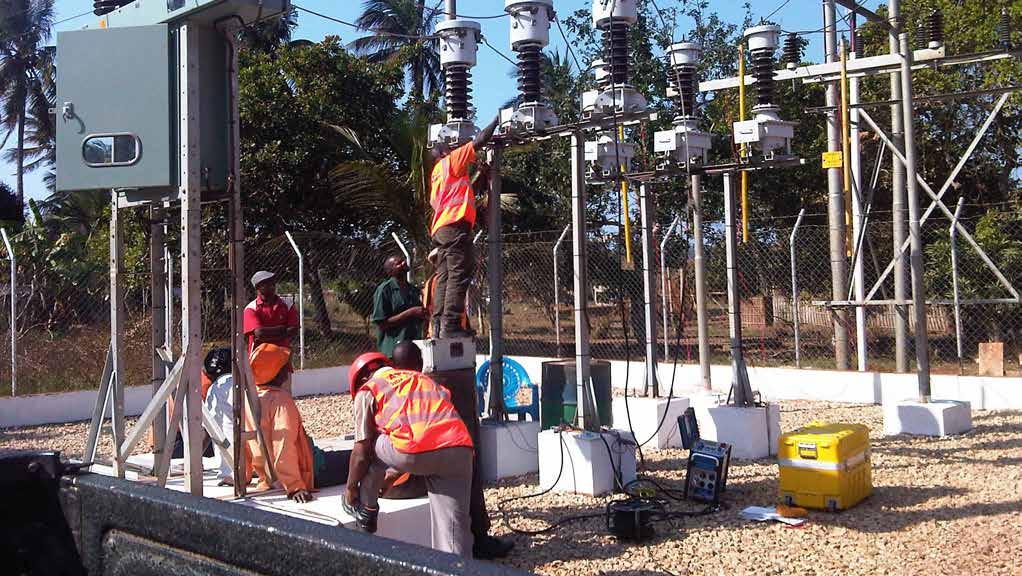

Partners and Suppliers
Moz Energy LDA for a 20MW To bring the nexus of projects Did you know? solar power project in Pemba, in discussed above to fruition, EDM Mozambique’s northern region. has brought together a nexus of Efacec will be This is just the first of a few partners and suppliers. Neoen is responsible for projects totalling 90MW that the general contractor behind the engineering, MBHE will deliver as part of an the Metoro Solar Power Plant, procurement MOU signed with EDM. which will generate 40MW of and construction As stated at the outset, the energy every year for its 25-year (EPC) and less glamorous infrastructure life. Efacec will be responsible for operations and projects will prove just as the engineering, procurement maintenance important to deliver EDM’s and construction (EPC) and (O&M) for a ambitions. SETH has been operations and maintenance similar project contracted for the rehabilitation (O&M) for a similar project in in the same of the distribution networks the same region - this time region - this time of Maputo and Matola - a delivering 68MW - which is delivering 68MW significant undertaking, which nearing completion. - which is nearing begins in the first half of 2021.
These are to mention just completion. Other partners and suppliers two of the many renewable include consulting firms like projects on the horizon for Norconsult, Consultec and WSP EDM. Elsewhere, MBHE recently Environmental. It also maintains signed a Joint Development Agreement (JDA) close links with French energy giant, TOTAL, with Electricidade de Moçambique (EDM) and itself on a journey to decarbonize its


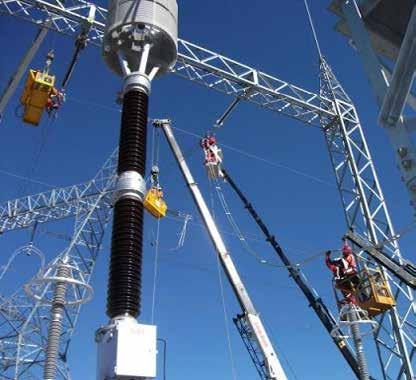

energy output, thus being a useful ally for Mozambique on the journey ahead.
The Future
Mozambique’s resilience and drive for economic transformation has been witnessed across board. Mozambique is blessed with considerable mineral and gas reserves, vast arable land, extensive coastline and harbours, as well as transport and most importantly a beautiful people and culture.
EDM understands its role as the body tasked with the responsibility of lighting the path for an inclusive socio-economic transformation of Mozambique. To this end EDM is working with the Mozambican government on policies and reform as well working with several private stakeholders to become a smart utility whose services and products exist in every household, all corporations and enterprises across all of Mozambique by 2030.
The goal includes expanding from the current 30% access to 100% universal accessibility across the country by making 450,000 new connections per year for the next 10 years. Another important feature of EDM’s future is transforming Mozambique into a regional energy actor in southern Africa and lastly achieving gender equality in professional and leadership participation.
To achieve this EDM plans to continue to work with both its partners in Southern Africa Power Pool (SAPP) and internationally as it continues to work towards energy efficiency and energy security for the people of Mozambique.
EDM
+258 21 359600 info@edm.co.mz www.edm.co.mz

Port of Algeciras
EUROPE’S GATEWAY
RESEARCH BY Fernando Ruiz

Port of Algeciras
EUROPE’S GATEWAY TO AFRICA
Fernando Ruiz

Few episodes have struck home the importance of ports quite like the ongoing coronavirus pandemic. Even as businesses of all manner have closed shop because of government regulation, certain organizations, among them ports, have remained open throughout - underlining their importance to the survival of economies. One such port is the Port of Algeciras in the Bay of Gibraltar - Europe’s closest port to Africa. Business Excellence has profiled many port authorities over the years, but perhaps none during a climate that comes close to what the coronavirus pandemic has brought to this industry. For this, and a number of other reasons, the Algeciras Port Authority (APBA) is a fascinating subject matter. Furthermore, its president, Gerardo Landaluce, was himself infected by the virus back in March of this year. Thankfully, he made a full recovery and ABPA has continued its operations largely unhindered. So, if anyone knows that the show must go on, it is the ABPA.
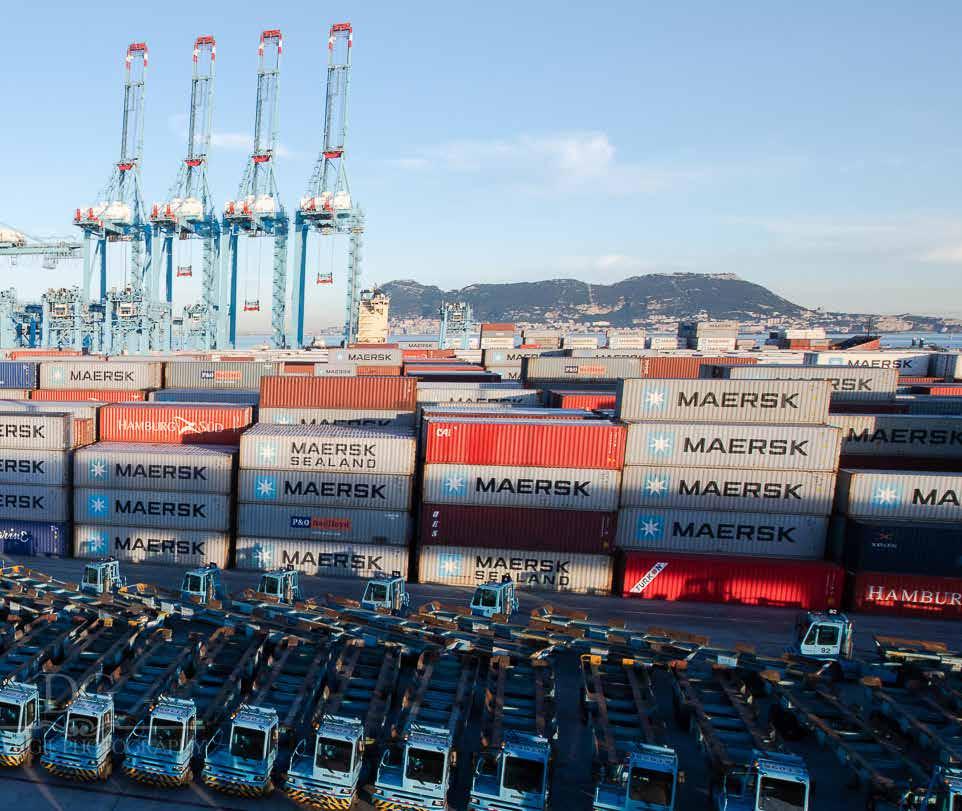
Overview
As is befitting a port with its location, Algeciras has an extremely colourful history. Originally a Roman settlement, it had to be rebuilt by the Moors in 733 after it was destroyed by German barbarians and vandals. It is widely recognized as the first port built by the Moors in Europe and provided a springboard into Iberia, where they remained for several hundred years. The name given to the port ‘Green Island’ is still used by its Spanish owners today.
Thankfully, Algeciras is now a centre of
PENINSULA PETROLEUM Autoridad Portuaria de la Bahia de Algeciras (APBA)
Peninsula was established in Gibraltar in 1996 and is a leading global marine service, storage and supply business. Due to its origins and continued presence in the Strait, Peninsula has built a strong relationship with Algeciras Port which has helped position the Bay as a stalwart for vessels entering or leaving the Mediterranean. Peninsula currently holds the largest storage position in Algeciras Port making it a fully integrated part of its operation.
Algeciras is Spain’s busiest port and a key transhipment hub for the Iberian hinterland. Its strategic position encouraged Peninsula to expand into the Algeciras market in 2013 where it quickly grew into a leading physical supplier. Paired with its global network, Algeciras has enabled Peninsula to offer the best loading options and barge fleet in the area as well as quality supply flexibility.
Active cooperation between different players in the Bay has led to the development of an ecosystem of operators and supply options. Together they have created a world class hub which collectively benefits from developments made by all the individual parties. Recently, Peninsula has introduced a series of upgrades to its fleet including a new build 8,000 dwt supply vessel, and the largest dedicated marine fuel shuttle tanker in the market. These constant upgrades support Peninsula’s Algeciras operation as an integral marine fuel blending, storage and distribution hub servicing key locations such as Barcelona, Malta and Las Palmas. It also helps develop and evolve the Bay area making it a very attractive hub in the Mediterranean.
As Peninsula looks beyond bunkering to further develop its services, it has bolstered its physical storage, shipping capabilities and quality control. The company has been implementing a long-term business strategy to develop its offering to meet ever changing client and industry demands. All of this has been done in line with the company’s conservative risk management strategy which has put Peninsula in a very strong position to continue to integrate and offer smart solutions.
Peninsula saw the IMO 2020 low sulphur marine fuel cap as an opportunity, rather than a hurdle, to highlight its exceptional supply chain platform and offer customers comprehensive solutions across multiple locations. For the last year, Peninsula has been successfully supplying VLSFO in Europe, the Americas and Asia to its customer base. Peninsula’s focus on the importance of supply chain control and logistics has seen the group increase its strategic storage positions globally, which today includes almost one million cubic meters of terminal capacity worldwide.
Owner and CEO John A. Bassadone said, “The Bay will always take pride of place in Peninsula’s history. Not only is it Peninsula’s original home, it is also mine. Having a strong relationship with the Port of Algeciras has allowed us to create one of the most engaging marine fuel hubs in the world. It is testament to the ports and the operators in the area that Algeciras is best in class when it comes to marine fuel supply and services.”
Peninsula’s vision is to lead the marine energy’s transition to a sustainable future. It has already navigated many industry milestones and tailored its strategic direction accordingly to continue its journey of growth to become the leading marine service, storage and supply business globally. Peninsula is in a unique position to proactively identify the signs of change in the industry and the economy and quickly implement pioneering solutions.
Bassadone concludes: “We are incredibly fortunate to have the facilities and structure of Algeciras Port on our doorstep and we look forward to continuing our relationship with the Port Authorities to ensure the continued success and development of the Bay.”
info@peninsulapetroleum.com www.peninsulapetroleum.com
MIDWAY TECHNOLOGIES
Security Breaches caused by phishing emails or ransomware is one of the main reasons why a company’s reputation or operation can drastically decrease. In these times of intensive teleworking, the risk of suffering security threats increases due to the increase in the management burden of information systems to respond to these new needs.
The “New Normal” we live in has made it necessary for employees to work from home/remotely and this present new risk to your network infrastructure. Outside the more secure company network, the employees are now the ones who are directly exposed to phishing attacks that can jeopardize the security of your information systems due to the lack of updating and supervision of said systems. To minimize these risks, it is now more than ever Conseguimos que las empresas sean más eficientes, important to have full access to the security status productivas y seguras of all the computers in the company and ensure Ofrecemos servicios IT adaptados siempre a tus necesidades. Estudiaremos tu proyecto that they can be managed and updated through a ayudándote en todo momento a tomar la elección correcta. simple Internet connection without the need for VPN www.midway.tech tunnels that only affects employee experience.
At Midway Technologies we are specialists in improving the security of your business. We deploy technologies such as Azure Sentinel, Defender, Azure Information Protection, Conditional Access, Intune, Co-Management or Autopilot, among others to increase the level of security for your teams and employees as if they were connected in the office and with a simple Internet connection. www.midway.tech
MIDWAY TECHNOLOGIES
At Midway Technologies, we are helping the Port of Algeciras in its digital transformation process.
Our job is to advise and execute the project. We updated their current email infrastructure to an online model, we migrated their applications and services from Microsoft SharePoint 2013 to Microsoft SharePoint Online.
This change will allow the Bahía de Algeciras Port Authority to update its systems, better adapt to the new needs for integration with external systems, to make costs more flexible and, of course, to have a more collaborative environment where it can execute its daily work.
Midway Technologies carries out its function with Conseguimos que las empresas sean más eficientes, focus on high quality, professionalism and rigor, using productivas y seguras the most modern technologies, always focusing on Ofrecemos servicios IT adaptados siempre a tus necesidades. Estudiaremos tu proyecto operational excellence and full customer satisfaction. ayudándote en todo momento a tomar la elección correcta. The sectors in which Midway Technologies www.midway.tech works requires greater intensity very high levels of innovation and quality, which we continually meet based on our continuous commitment to technological evolution and the development of our human resources capacity. www.midway.tech
trade and prosperity for the Iberian peninsula. In 2019, it handled a total of 5.1 million TEUs, a new record for the port. Of these figures, Mr. Landaluce says: “Our total throughput was 109.4 million tonnes. In 2019, our imports and exports of containers grew by 14% and 8% respectively.” The annual total also includes the milestone of 10 million tonnes of throughput in May, the highest figure any Spanish port has ever achieved.
It’s not just cargo, either. Algeciras has also become a primary European cruise ship port. Regular routes now traverse the strait with North Africa, and combined, the Algeciras-Ceuta, Algeciras-Tangier Med and Tarifa-Tangier regular lines together resulted in a total of over 6 million passengers in 2019 - the first time that the milestone has been broken and hinting at an even more vibrant future tourism trade in Andalusia.

We help companies become more efficient, productive and safe

We offer IT services tailored to your needs. We will study your project, helping you make the correct choice at ali times.
www.midway.tech
hola@midway.tech

technologies with love!

Bay of Algeciras Logistics Area
INCREASED CONNECTIVITY
A 300 Ha Logistics Activity Area - including a fully integrated rail terminal connected to the TEN-T Network- set to bringing companies closer to the markets they serve and reinforcing the role of the Port of Algeciras not only as a transhipment centre, but also as a strategically well-located Gateway Port for Asia, Africa and Latin America trades.

▼AFRICA PORT OF ALGECIRAS ▼EUROPE

SECTOR 2: San Roque
SECTOR 1 El Fresno
info@redlogisticadeandalucia.es
LOGISTIC NETWORK ANDALUCIA
Increased connectivity
A resolute commitment and a well-founded business strategy from the Andalusian Government to offer logistics zones to provide added-value services that promote consolidation and integration of transport & logistics industries in order to support a better efficient movement of cargoes beyond shipping Terminals.
Split in two sectors - El Fresno and San Roque- these State of the art infrastructures perfectly line up with the latest shipping companies, terminals and logistics operators strategies to enhance supply chain efficiencies by reducing dwell time and costs, easing terminals congestion, roads risks, fewer emissions and levels of pollution, so cargo owners save on storage charges. In addition, the recent agreement between the public entities –Logistics Network of Andalucía SA & Cadiz Free Zone Consortium- signed on 1st of April 2018 sets the basis to develop a new Free Trade & Tax Zone on sector I El Fresno where the companies willing to establish their facilities will take advantages form customs and tax benefits.
Finally, Sector II San Roque - 10km away from the port- with 125 ha of high-quality logistics land divided into three separate areas that exclusively deal with logistics, intermodal operations and other transportrelated and auxiliary services, will host a Great Intercontinental logistics and distribution platform in Southern Europe. info@redlogisticsaseandalucia.es
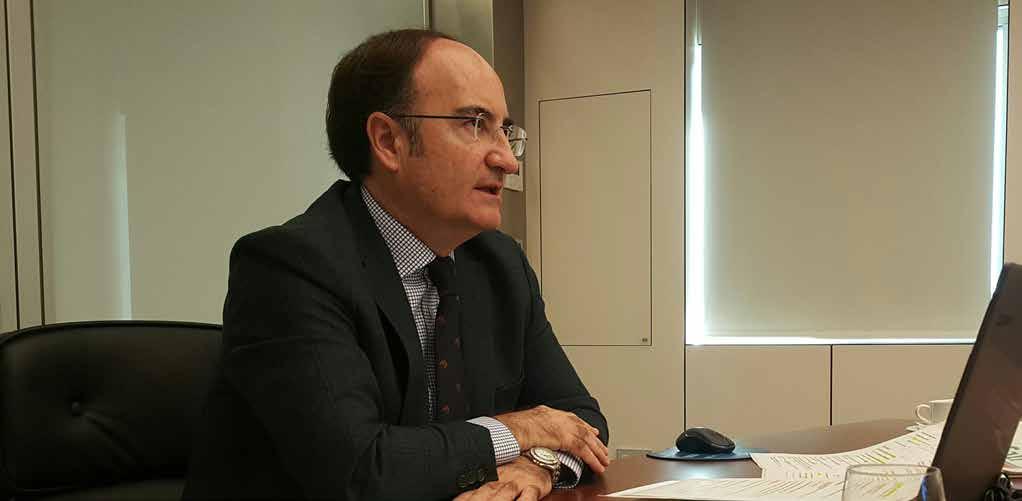
Business Continuity in The “New Normal”
The personal resilience shown by Mr. Landaluce back in March, when he continued work in quarantine, is reflected in his general attitude to how the shipping industry needs to respond to coronavirus. He says: “We were in completely unknown territory [at the start of the pandemic], where there were no protocols in place and we just acted as events unfolded. But the port has continued operations from minute one, with no break in traffic.”
That’s not to say that the port has remained completely unaffected. As Mr. Landaluce notes, the closure of Spain’s borders has led to a 5% fall off in traffic over the course of the year, but says: “things are beginning to stabilize again and we’re ready for whatever comes our way, preparing ourselves for what we have to achieve in the coming days and months,” before noting that 140 people usually working at the port have been able to work from home during the pandemic.
Growth generating growth
The expansion of Algeciras container traffic - now being a destination of the world’s 23,000 TEU super container ships - means that it has reached a point where investment



Your Complete Transport Partner
TRANSPORTATION
• Uploads and downloads • Good reception • Delivery
CUSTOMS
Our customs office allows you to have a complete service with your transport.
EUROPE & AFRICA LINKS
We have an offices in Tangier (Morocco) & Algeciras (Spain).

T: 629 579 486 (Jorge Lima)
T: 956 904 946 (Administración) E: info@bolipesk.es Please visit our website:
www.trans-bolipesk.com
will be required for it to continue growing. On this, Mr. Landaluce is unequivocal: “the progress of the port depends on its southern expansion,” he says, referring to the planned expansion of the anchorage to the south of the existing port.
He continues: “For this, we’ll need to raise 300 million from our own funds or from external investors. We’ve grown twice as fast as most other docks over the past few years and we’re reaching the stage where we need expansion.” For this, the port has developed a master plan with a time horizon of 2030. Among the plans outlined in the master plan in addition to those mentioned by Mr. Landaluce, is a maritime lagoon in the north of the port to continue its tourism growth in line with that of cargo.
Thankfully, the aim is for this growth to be as sustainable as possible. Under Mr. Landaluce’ s management, the port has signed up to the AIVP (the world authority for port cities) 2030 agenda, among which is a range of 10 sustainability targets for
ports to aim for. As part of this program, Mr. Landaluce has ordered all buildings under his organization’s management to install photovoltaic solar panels to generate renewable electricity in-house.
Strategic Partnerships
Any port is only as useful as the reliability of its throughput and for that, ABPA calls on a number of partners and stakeholders, almost all of whom are local owing to the port’s extensive history. Many of these maintain close relations with the port, having


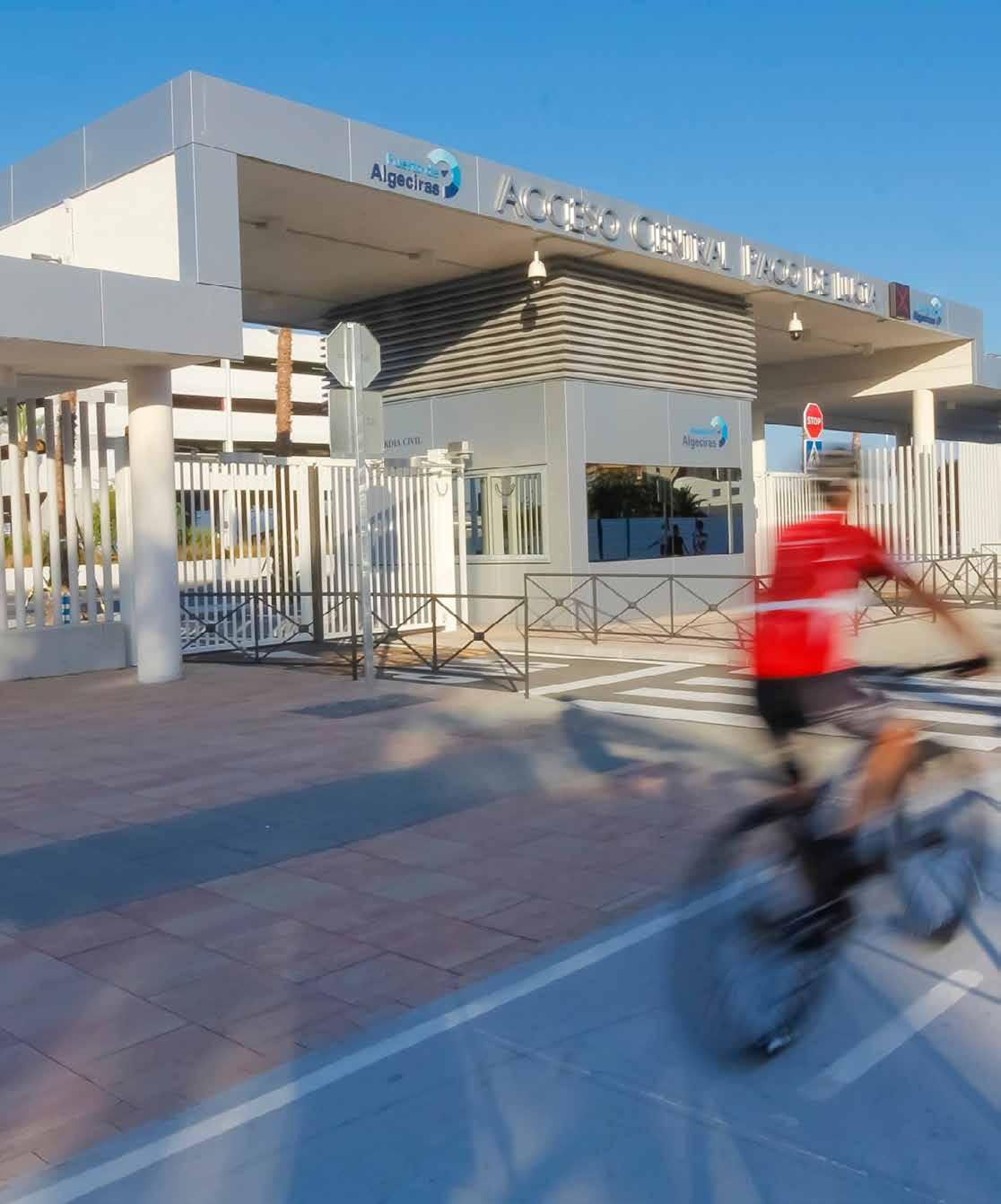
been founded by locals whose families have been employed in various parts of the organization over the decades.
Examples include Gabarras y Servicios S.A., a diversified shipping services company founded in 1981, whose founder members were former employees of the port authority. Other local firms which are offshoots of the port authority are Grupo Piedra, a logistics company founded in the port just under 25 years ago in 1996, Algeciras Mooring Services, S.L , Area Logistica Bahia de Algeciras and finally, Global Logistic Algeciras Port S.L
However, there is also a sizable international contingent of partners, as one might expect of a port of this size. These include APM Terminals Algeciras, the Dutch global container operating company, CMA CGM, the French shipping logistics company, and Pensinula Petroleum, the UK-registered firm which is the world’s largest physical bunker supplier.
The winds of change
As trade logistics improves on the continent of Africa over the coming years - and all indications are that it is improving at lightning speed, we can reasonably expect to see significant growth in trade between the continent and Europe. As Europe’s closest port to Africa, Algeciras is likely to be one of the big beneficiaries of this trade. Nobody knows this better than its port authority President, Mr. Gerardo Landaluce, who regularly refers to the port by its African name, Green Island. For Mr. Landaluce and the ABPA, business is very much a case of full steam ahead.
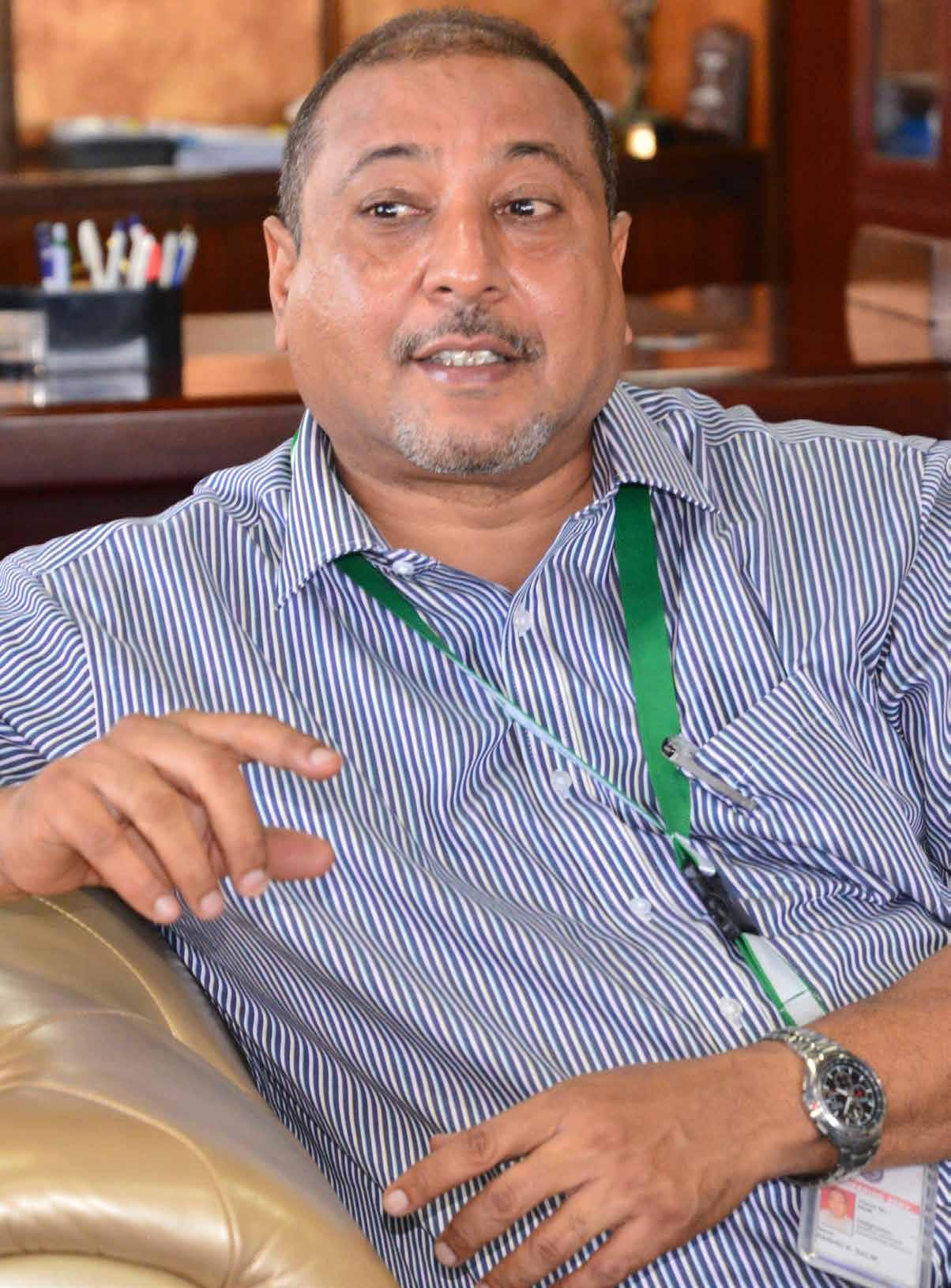
PLAYING ITS PART IN EAST AFRICA’S LOGISTICS REVOLUTION
Kenyan Ports Authority
RESEARCH BY Kaye Kalu

Business Excellence last visited the Kenyan Ports Authority (KPA) in June 2014, at a time when it was planning a second container terminal for Mombasa Port to further extend its capacity. Shortly after our feature, in August of that year, it agreed to a deal worth close to half a billion dollars with China Communications Construction Company (CCCC) for the construction of three new berths.
The berths were just one element of the ambitious Lama Port South Sudan Ethiopia Transport (LAPSSET) corridor program. LAPSSET, in turn, was an important component of the Kenya 2030 national planning strategy, which focused on reforms and development across 10 sectors in the economy.The estimated total investment for LAPSSET was set to reach $24 billion - a huge undertaking for a country whose GDP is approximately $75 billion.
On our return to KPA this year, we took a look at how the new berths being constructed by CCCC were shaping up and the difference

they were likely to make in the years ahead. The last number of years haven’t always been without their challenges for KPA but if the colourful history of Mombasa - ‘the city of merchants,’ and Africa’s fifth busiest port- teaches us anything, it’s that this is a city which is highly resilient.
Progress Report
By any measure, 2019 was a good year for KPA. In August, the first berth of the aforementioned CCCC project was

delivered. And as work continued on the second and third berths, which are due to be completed by December 2020, the company finished the year on a positive note by registering a record 1.4 million cargo boxes, outperforming the target of 1.35 million cargo boxes which had been set for the year.
This translated into over 34 million tones of throughput cargo at Mombasa Port, a nearly 20% increase on the equivalent figure for 2018. This is the culmination of all the efforts being undertaken by the KPA and its stakeholders. Modernization and expansion of the port infrastructure, for example, has meant that there are far fewer logistics bottlenecks, easing
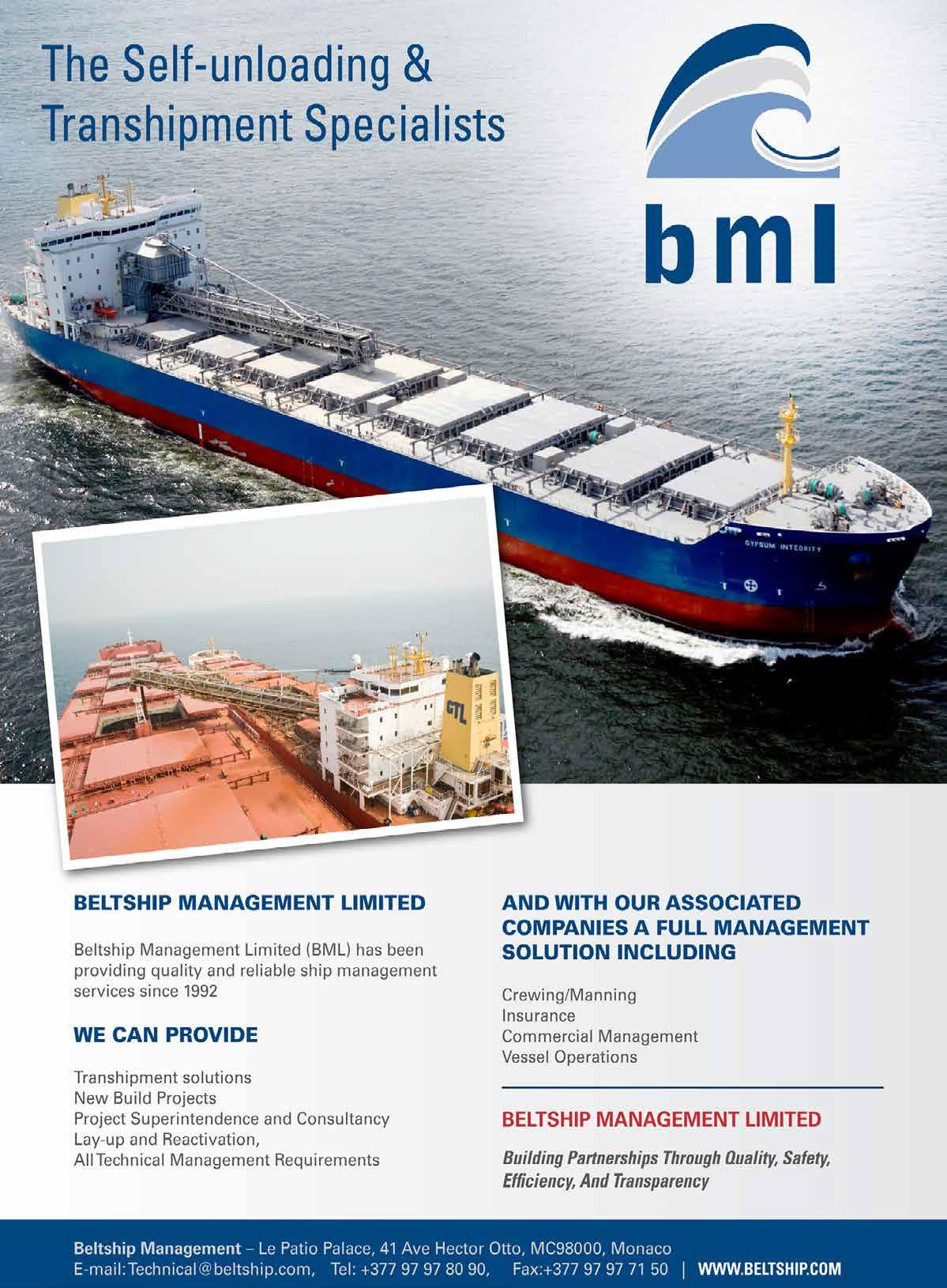

the flow of trade in Kenya and East Africa in general. Remarkably, twenty-foot equivalent units (termed “teus” in the industry), grew by 87% year on year to 197,272.
On this basis, KPA is already ahead of the KPIs set in the 5-year plan, which sets a target of 1.5 million cargo boxes by 2022. The coronavirus pandemic that has hit in early 2020 will inevitably be a drag on the company’s efforts this year, but in conjunction with the Kenyan government and other stakeholders, KPA has already put in place a range of measures to counteract its negative impact.
The development of berths 22 and 23 at Mombasa Port is underway and making good progress. Dredging work is being carried out by Boskalis and should be finished by 2021, allowing the next phase of construction to commence. Both berths are already approximately sixty percent complete. The deepening of the Kilindini channel has also
general auto harDWare
General Auto hardware Ltd started as a promising wholesale and retail business set up in 1987. From then on the vision has evolved year on year and today has over 26 years experience in industrial and general hardware. The company has grown many folds and is certainly an established company and has been for this period of time had strong, vast experience in supplying products that meet required specifications as per our clients needs. Like any company, General Auto hardware Ltd with a sound futuristic vision to grow further, have visualized in marking our presence in the global markets. our under mentioned products should help our clients improve efficiency of their processes and increase competitiveness in the global scenario. our association with Mumias sugar co. Ltd is remarkable in core areas, such as the supply of: • sealing Products - Gland Packing & steam Gasket • Tube cleaning equipment (Boiler) • roller Bearing & cooper split roller
BrGs • Mini roller Grooving Tools • Boiler Tubes, Lifting Tools & equipment • electric Geared Motors • Insulation & Lagging Materials • Industrial Gate Valves LP & hP • conveyor Belts gah@swiftkisumu.com


allowed larger o berth and improved cargo handling capacity which has improved ship turn-around time and cargo evacuation.
KPA’s progress is underpinned by the company’s long-term strategic plan, but also greater integration with its partners, examples being the Standard Gauge Railway (SGR( and Nairobi Inland Container Depot (ICD). With their support, KPA has been able to reduce average cargo dwell-time from 23 days to around four days within 12 months. This has also resulted in record cargo numbers for SGR, coming in at around three million tonnes for 2019.
Partners and Suppliers
In addition to the Kenyan government, Trademark East Africa (TMEA) has become
one of the most important stakeholders for the KPA over the past few years. Developing trade logistics hubs is of limited use if there aren’t good trade relations, which is where TMEA operates - seeking to expand Kenya’s trade horizons.
The speed at which the turnaround has occurred at the KPA’s ports is a result of improving their own processes, but also demanding more of their stakeholders. All of the KPA’s partners and suppliers have aided in raising standards. This includes stalwarts of the shipping industry such as Solutions (MTBS) for maritime consulting, RAIS Shipping Services, the liner agency, and the Comarco Group, a Kenya-based shipping contractor. The Kenya Ships Agents Association also provides ongoing invaluable support.
In addition to the aforementioned dredging work on berths 22 and 23 being carried out by Boskalis, engineering work on the same is being conducted by Southern


Engineering Co. Ltd (SECO) and African Marine & General Engineering Company (AMGECO). Continuous and uninterrupted energy at the KPA’s ports is ;provided by PowerGen and KETRACO, while security is taken care of by Solvit Security Solutions.
The Revolution Begins Here
When the MV Lowlands Mimosa berthed in the Port of Mombasa in June 2019, it made very few headlines, even in Kenya. But make no mistake - this was a huge milestone for the Port of Mombasa and the KPA. Lowlands Mimosa is the biggest bulk carrier vessel in the world and its berthing at the port was a sign that a revolution in logistics is afoot here. That a vessel of this magnitude would arrive at Mombasa would have been unthinkable less than five years ago.
All of the numbers at Kenya Ports Authority are trending upwards and this doesn’t look like stopping anytime soon - too many stakeholders stand to benefit from its success - principally the people of Kenya, Ethiopia and Uganda. TEUs at Mombasa port are expected to continue their ascent to reach 3.5 million by 2030 and 5.9 million by 2047. Thanks to the KPA’s stellar work, the revolution is firmly underway in East African logistics.
KENYAN PORTS AUTHORITY +254-41-2112999 info@kpa.co.ke @Kenya_Ports www.kpa.co.ke

Puerto Buenos Aires
EJE DE DESARROLLO DE
RESEARCH BY María Bernardita Guschmer
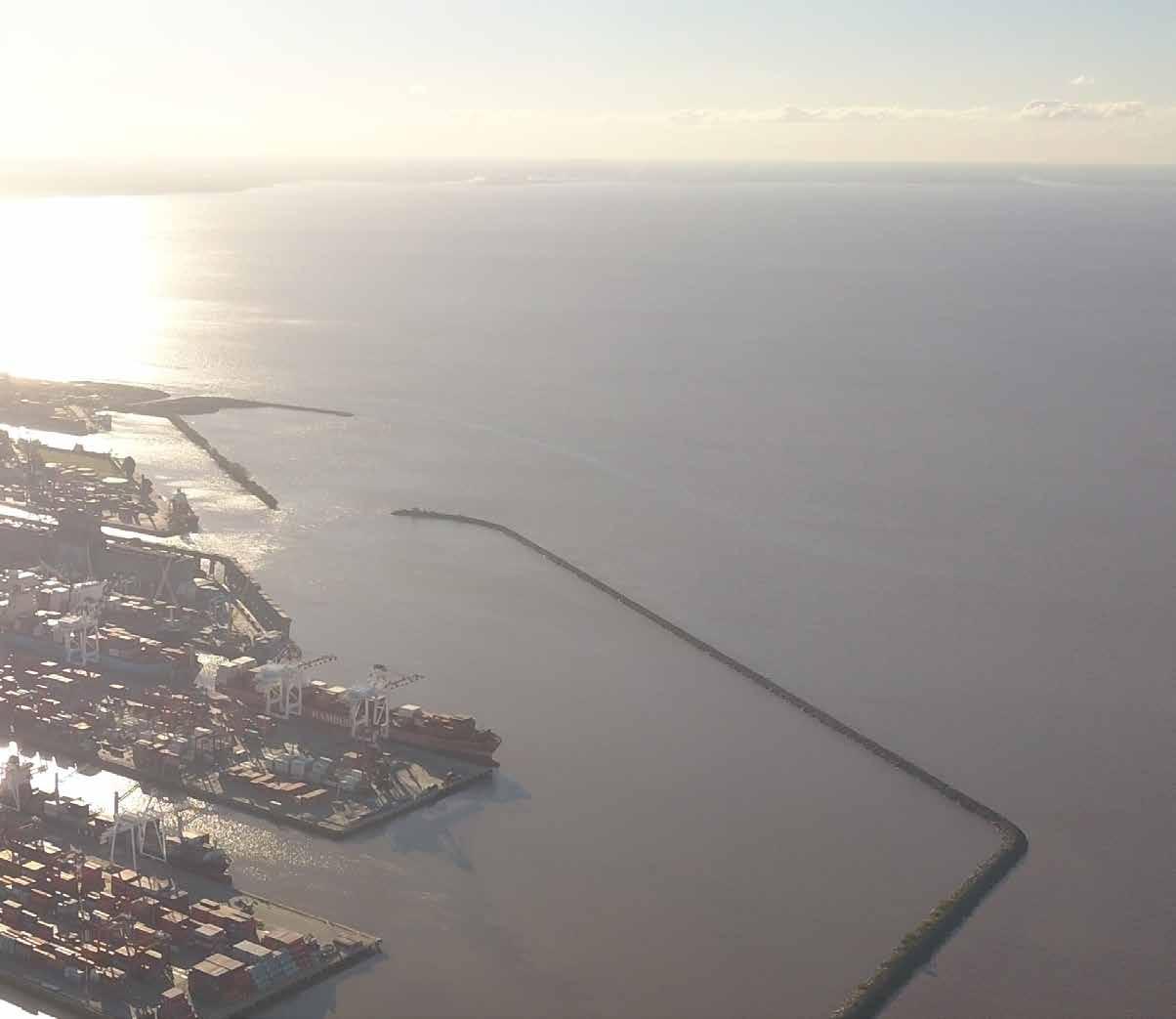
Puerto Buenos Aires
EJE DE DESARROLLO DE UNA NACIÓN ENTERA
María Bernardita Guschmer

La Ciudad de Buenos Aires, capital de la República Argentina, es la ciudad más poblada de todo el país y se encuentra ubicada en la región centro-este, sobre la orilla del Río de la Plata. Sin duda alguna, el Puerto Buenos Aires ha sido una pieza fundamental de la historia de esta ciudad y de todo el país.
El 3 de febrero de 1536, Don Pedro de Mendoza, militar español de familia noble, fundó el “Puerto Real de Nuestra Señora Santa María de los Buenos Aires”. Es en esta fecha que también nace la Ciudad de Buenos Aires. Es importante mencionar que en este momento Argentina aún no existía, y recién se creaba la Ciudad de Buenos Aires, de la mano del puerto. Es decir que incluso antes de que los colonizadores españoles crearan el Oses (Director de comunicación), quien nos contó que el puerto “posee una capacidad operatoria de 1.5 millones de TEU (unidad de medida del transporte marítimo y fluvial) anuales. Además, mueve el 62% de la carga de contenedores del país. En la actualidad se encuentra concesionado y sus operadores son tres de los cinco más grandes del mundo”.
La existencia del Puerto Buenos Aires ha sido un eje fundamental de desarrollo para todo un país. Reflejo de esto es el hecho de que es fuente de más de dos mil empleos directos en sus tres terminales. Adicionalmente, en Argentina y en toda la región genera cientos de miles de empleos indirectos.
Sus múltiples conexiones con distintos medios de transporte han consolidado al Puerto Buenos Aires como un gran centro
Virreinato del Río de la Plata, el Puerto Buenos Aires ya operaba en las riberas del Río de la Plata, el más ancho del mundo.
El desarrollo del puerto y de la zona siempre han estado ligados. El puerto también cobra gran importancia por haber sido el lugar de recepción de millones de inmigrantes. Estos llegaron de todo el mundo a las riberas del Río de la Plata en búsqueda de nuevas oportunidades. Tanto en Argentina como en toda Sudamérica, la cultura está marcada por la influencia de las olas migratorias.
La actualidad del puerto
En la actualidad el Puerto de Buenos Aires es el único puerto nacional y principal puerto de la Argentina. En Business Excellence tuvimos la oportunidad de entrevistar a Facundo logístico de distribución. El puerto cuenta con una posición privilegiada, en el ingreso de la Hidrovía Paraguay–Paraná, un canal navegable por los ríos Paraguay, Paraná y algunos de sus afluentes. Esto le permite ser el punto de transbordo de todas las barcazas que arriban por esta ruta tanto de las provincias argentinas como desde los países de Paraguay y Bolivia.
El carácter federal del puerto
Al ser el Puerto Buenos Aires el único puerto nacional, la gestión reciente se ha destacado por su carácter federal, es decir, de integración con las demás provincias. En ese sentido, la administración del puerto se toma muy en serio la responsabilidad de incentivar el comercio exterior, impulsar el desarrollo de los demás puertos del país y fomentar el crecimiento
de la industria argentina mediante políticas públicas. A nivel regional, se trabaja en la promoción e implementación de políticas y procesos sustentables, en la implementación de tecnología y en la capacitación de los agentes portuarios.
En palabras Facundo Oses, “con el Consejo Portuario Argentino (CPA), y siguiendo los lineamientos del Presidente Fernández, tenemos una mirada muy federal, ya que nos interesa potenciar el desarrollo de los puertos argentinos que son grandes generadores de trabajo y dinamizan las economías regionales”.
Políticas sostenibles del puerto
El Puerto Buenos Aires cuenta con un Plan Estratégico de Sostenibilidad que abarca tres dimensiones: la social, la ambiental y la económica. Todas las acciones que se promueven están asociadas con los Objetivos del Desarrollo Sostenible (ODS) acordados por la Organización de las Naciones Unidas (ONU). Estas se basan en un enfoque de derechos con un carácter integral.
Dicho plan de sostenibilidad abarca los distintos aspectos la operación del puerto. Dentro de este esquema, es crucial garantizar la calidad y la excelencia de los
“Donan dinero resultante de la venta de chatarra de barcos hundidos o material naval abandonado que se remueve de la jurisdicción portuaria”.


protocolos y servicios. Las reciclables e incluso “donan gestiones para la certificación Did you know? dinero resultante de la venta de distintas normas y la adhesión de chatarra de barcos hundidos a programas internacionales Por fortuna, o material naval abandonado dan fe del compromiso con la actividad que se remueve de la la sostenibilidad. portuaria no ha jurisdicción portuaria”.
El Sistema de Gestión cesado en el Ambiental con que opera el Puerto Buenos Consecuencias por la puerto ha sido certificado bajo Aires. De hecho, pandemia del Covid-19 Norma ISO 14.001 para las el puerto Por fortuna, la actividad actividades de administración, ha seguido portuaria no ha cesado en el operación y control. Esto permite, trabajando Puerto Buenos Aires. De hecho, de acuerdo con Facundo Oses al 100% de el puerto ha seguido trabajando “lograr una mejor eficiencia en su capacidad al 100% de su capacidad el uso de recursos naturales, una operativa. operativa. Su funcionamiento ha gestión efectiva de residuos, sido esencial para garantizar el medidas en prevención de comercio exterior de Argentina. derrames y la adecuada gestión También el abastecimiento de de impactos ambientales en proyectos y elementos fundamentales para el consumo obras, entre otros”. de las familias e insumos para combatir la
Asimismo, para potenciar los alcances de propagación del nuevo coronavirus. estas iniciativas, la administración del puerto Desde el puerto han trabajado junto a trabaja con ONGs para recuperar los residuos las autoridades sanitarias nacionales en la
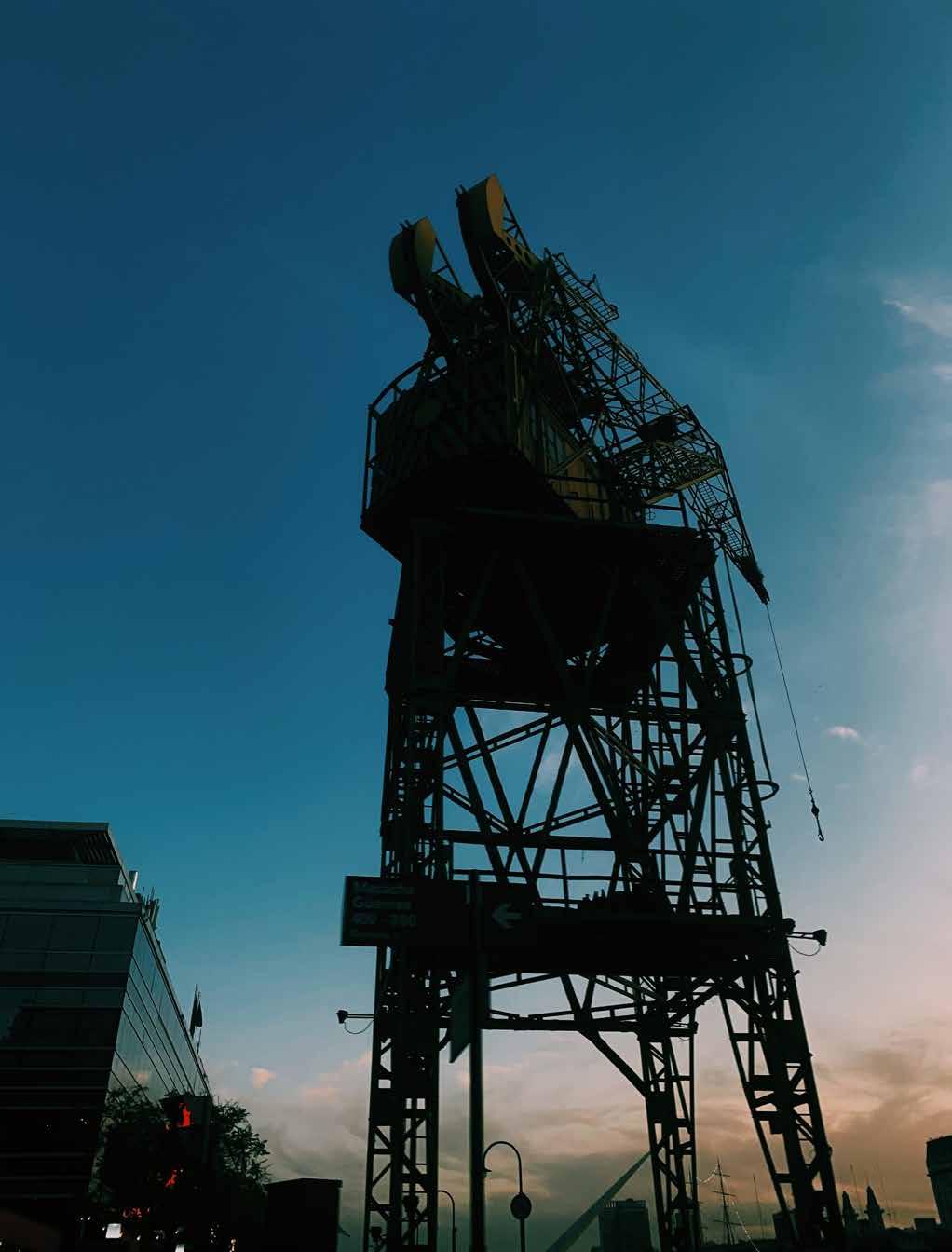
implementación de protocolos para cuidar a la fuerza laboral del puerto. Este ha sido un trabajo mancomunado con los distintos actores. Se ha abierto un diálogo en torno a las distintas necesidades y se han encontrado soluciones a la medida de cada situación.
También se han implementado estrategias que incentivan la llegada de más buques de carga y de cruceros. Ejemplo de esto es la reducción en las tasas portuarias que ha mitigado el impacto de la pandemia y logrado preservar puestos de trabajo.
De acuerdo con Facundo Oses “las autoridades de la AGPSE bonificaron en un 20% los cánones de locación de los permisionarios y, además, extendieron de cinco a siete días el período del forzoso. Esto disminuyó notoriamente los costos logísticos y redujo la circulación de personas dentro de la jurisdicción”.
Medidas de prevención del contagio
Los equipos técnicos del puerto, junto a las autoridades sanitarias nacionales competentes, han desarrollado los protocolos de sanidad que se encuentran vigentes. Estos se basan en la prevención y el cuidado. Entre ellos, el distanciamiento social, la utilización de elementos de protección personal, el lavado frecuente de manos, la atención rápida y aislamiento de los casos sospechosos. Asimismo, se ha realizado un esfuerzo para disminuir la circulación dentro de la zona portuaria, siempre garantizando el cumplimiento de todos los servicios y las operaciones.
El porvenir del Puerto Buenos Aires
Antes de hablar del futuro, cabe destacar que, tras la declaración de Independencia de la República Argentina, el puerto fue eje de discusión durante muchísimos años por su control. Con la nación unificada, en 1980 la Ciudad de Buenos Aires quedó bajo dominio nacional y el puerto pasó a ser el primer puerto federal. Desde allí, el Puerto Buenos Aires pertenece a los millones de argentinos que habitan el territorio.
Actualmente, los equipos técnicos de Puerto Buenos Aires y del Ministerio de Transporte se encuentran elaborando los pliegos para la licitación de las terminales, en donde la operación se adjudicará a dos operadores. Esto conllevará una renovación de la infraestructura portuaria, que permitirá al puerto seguir siendo ese nodo de progreso y desarrollo que es fuente de orgullo e impulsa a una nación entera.
PUERTO BUENOS AIRES



